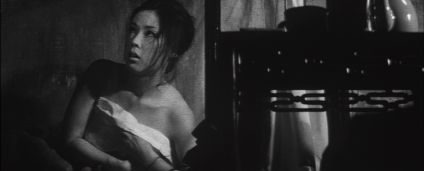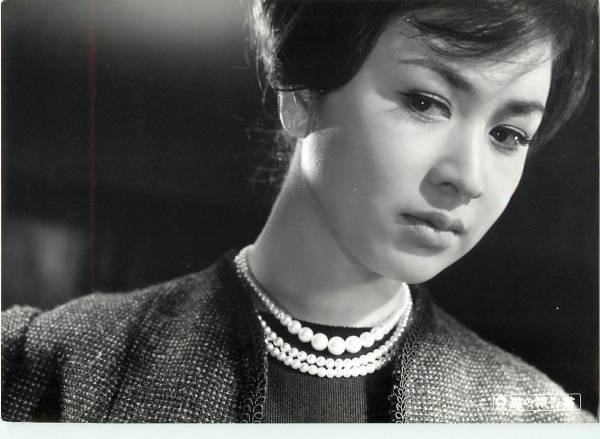Here’s part of the text I wrote for an audiovisual appreciation of Yasuzo Masumura’s Black Test\ Car and The Black Report for an Arrow Video DVD & Blu-Ray of those films, released in August 2020. — J.R.
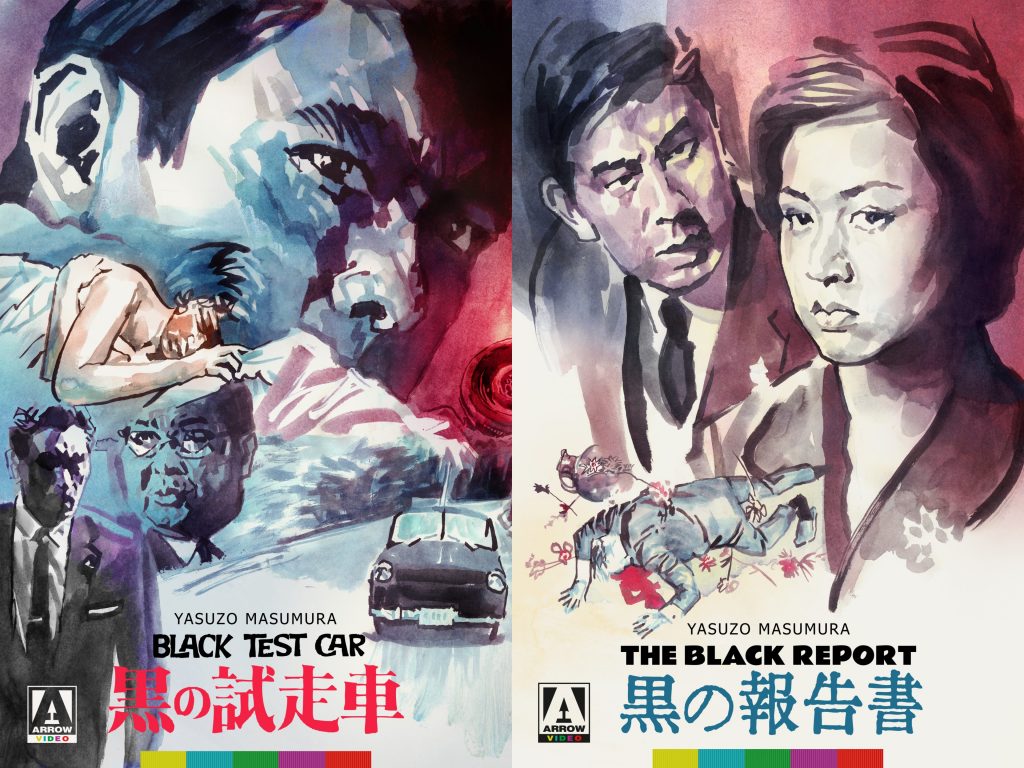
What Masumura Does with Our Madness
Jonathan Rosenbaum
There’s a dialogue exchange in Billy Wilder’s Cold War comedy One Two Three where someone asks, more or less rhetorically, “Is everybody corrupt?”, and the reply is, “I don’t know everybody.”
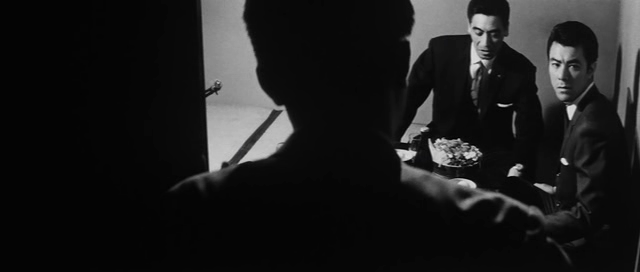
Billy Wilder was a cynic, but I’m not entirely sure that we can categorize Yasuzo Masumura that way as well. Certainly his vision of society was just as dark, but I think he also qualified as an intellectual more than Wilder ever did—and conversely, Wilder qualified as more of a journalist, because that’s how he started out professionally. Also, Wilder tended to make his characters heroes or villains whereas Masumura sometimes, as in Black Test Car, makes virtually all of his characters villains. (If he makes a few of the characters superior to the others—such as an executive who tears up a payoff check, or a woman who rejects her fiancé after he forces her to prostitute herself in order to spy for his company, or her fiancé once he finally reforms himself at the end of the film—this is only because they feel more disgust than the others do about becoming scumbags.)
Frankly, I would probably have to know Japanese society better in order to decide whether Masumura was cynical or merely pessimistic and/or misanthropic. He was certainly a paradoxical figure in many respects—a critic of Japanese conformity who wound up as the quintessential Japanese company man, a promoter of individuality and freedom who sometimes equated those characteristics with insanity. To come to grips with these paradoxes, it might be helpful to consider that the Japanese language doesn’t distinguish as we do between singular and plural. Thus the films that we call Black Test Car and The Black Report could just as accurately be called Black Test Cars and The Black Reports, and what we know in English as Tokyo Story could easily have been called Tokyo Stories. All of which surely affects our grasp of what individuality or singularity might mean in Japan.
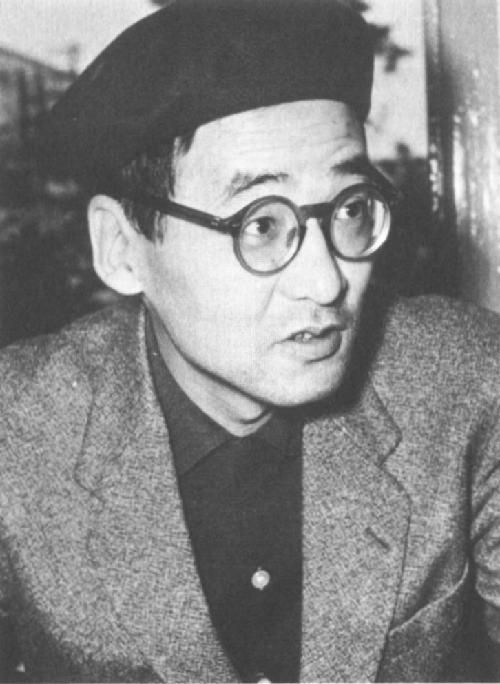
Yasuzo Masumura was a film critic as well as a film director—his collected criticism is almost as hefty as Jean-Luc Godard’s. He was born in 1924 and he had a brief military service at the end of WW2. Then he entered the University of Tokyo as a law student who also studied literature and where one of his friends and classmates was the writer Yukio Mishima, who years later would star in one of Masumura’s lesser features, Afraid to Die (1960). (This is more or less the film that led Nagisa Oshima to renounce Masumura as a guru and role model after having praised his earlier features.)
After a couple of years at Tokyo University, Masumura dropped out due to financial difficulties and found work as an assistant at Tokyo’s Daiei studio, where he eventually earned enough to return to college as a philosophy major, graduating in 1949 with a thesis on Soren Kierkegaard. The next year he won a scholarship at the Centro Spirimentale Cinematografico in Rome, where one of his teachers was Michelangelo Antonioni. A half century later, when Antonioni was still alive and confined to a wheelchair, he is said to have attended every or almost every screening at a Masumura retrospective held in Rome. After graduating, Masumura assisted on an Italian-Japanese production of Madame Butterfly (1954), then returned to Japan in 1954, where he worked as assistant to Kenji Mizoguchi on Princess Yang Kwei Fei (1955) and Street of Shame(1956) at Kyoto’s Daiei studio. After Mizoguchi died, he became an assistant to Kon Ichikawa on three more films before shooting his own first feature. Then, until Daiei went bankrupt in 1971, he remained there, often making three or four features a year, most often accepting assignments and then sometimes shaping them into his own distinctive forms of rebellion and subversion. (This is how he functioned as the quintessential company man.) Afterwards, for the remaining eleven years of his directorial career, he averaged about one film a year -– an uneven output that included many of his worst films along with a few notable items. He also did a lot of writing for television.
I became deeply interested in Masumura when I attended a retrospective of his films in Chicago in 1999, What interested me especially at the time was some of the ways that his 1950s work resembled stylistically certain Hollywood features from the same era by Samuel Fuller, Frank Tashlin, and Douglas Sirk, and not because he was influenced by them but because of a Jungian theory I had of so-called global synchronicity—meaning that the same sort of social currents affecting both Japan and the U.S. led to these stylistic similarities, even though the movie genres in question weren’t precisely the same. I should add now that this kind of reasoning applies only vaguely to Black Test Car and The Black Report, which at best or at most have a vague resemblance to what we now call “noir”–although I hasten to add that virtually no one apart from a few French critics was using “noir” as a genre term in the early 1960s. Even so, I think one can say that Black Test Car is as radical in its own way as the best films of Ray and Fuller during the same period.
Even so, as I came to know Masumura’s work better — assisted by a Japan Foundation study grant the following year, as well as being assisted by several Japanese film critics — I began to realize that the influences on Masumura of contemporary European filmmakers such as Antonioni and Alain Resnais were far more relevant. And once a Japanese graduate student in Chicago, a Mizoguchi scholar named Chika Kinoshita, began to help me by translating some of his criticism for me and by synopsizing and making copies for me of various films so that I could see them without subtitles, I began to appreciate some of the theoretical underpinnings of his filmmaking.
Let me cite one text of his in particular, published in 1958 and replying to his critics who accused him of making bleak and tasteless films that lacked sentiment and featured comically exaggerated and unbelievable characters without any depictions of environment or atmosphere. Essentially boasting that he was guilty as charged on all counts, Masumura offered a few counterblasts:
a. “Sentiment in Japanese films means restraint, harmony, resignation, sorrow, defeat, and escape, not dynamic vitality, conflicts, struggle, pleasure, victory, and pursuit … I buy the straightforward and crude expression, for I believe the Japanese restrain our desire so much that we tend to lose sight of our true minds.”
b. “There is no such a thing as non-restricted desire. A person who thoroughly discloses his or her desire can only be considered mad … [And] what I would like to create is not a stable person who cleverly calculates reality, and safely expresses his or her desire within the calculation. I do not want to create a humane human being. I want to create a mad person who expresses his or her desire without shame, regardless of what people think.”
c. “What interests me is a conflict between expressions of naked desires which cannot be mitigated by the environment.”
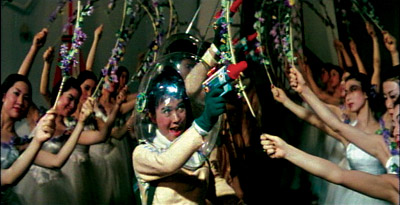
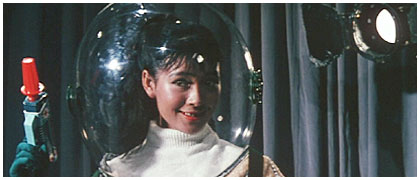
Regarding Black Test Car (1962) and The Black Report(1963), the subgenre of industrial espionage thriller begins in Masumura’s case with a color film, his fifth feature, Giants and Toys (1958), a rather nasty satire about feuding candy companies and their advertising campaigns–-a movie that resembles some of the satirical comedies of Tashlin, but without Tashlin’s good-natured humanism, made the same year that Masumura published the preceding text and during which he released three other features. If Tashlin’s movies tend to lack real villains, Masumura’s often consist of nothing but villains who enact institutionalized madness, including both of the car companies in Black Test Car–which is something closer to what one finds in Samuel Fuller’s films, especially those in which crime and war are reverse sides of the same coin. From this standpoint, I can recall Chika Kinoshita once saying to me how silly it was for some viewers to criticize certain films if they couldn’t identify with particular characters in them. Limiting one’s viewing options in that fashion may indeed be an Anglo-American disability, along with an avoidance of intellectual analysis, that we should try to overcome. It suggests to ma a desire to remain innocent like children when we watch movies. Of course some of that innocence is a good thing, but when it becomes an excuse for hiding from the truth it becomes more questionable. Like it or not, the message of Black Test Car is that the ultimate logic of capitalism is a form of insanity. Even the argument that competition leads to better products on the market is completely undermined here when it turns out that both companies wind up manufacturing different versions of the same car.
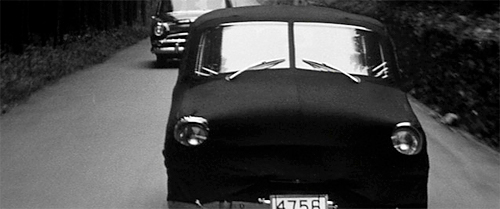
The military backgrounds of the characters (such as Mawatari) are important, because Masumura sees a continuity between wartime madness and peacetime madness. At least two of his movies in the mid-60s, Yakuza Solidier (also known as Hoodlum Soldier) and Nankano Spy School, virtually equate patriotism with insanity and view wartime violence almost exclusively as something that Japanese soldiers and Japanese patriots inflict on one another. So it’s not surprising that In Black Test Car, one of the companies, Yamoto, is named after a Japanese battleship. (The other company is called Tiger, which points towards the bestiality of competition.) There’s also continuity between the dingy locations of secret meetings, the cramped camera angles, and the corrupt nature of those meetings (e.g., the payoffs to a newspaper for printing certain kinds of news stories about the auto industry). Many of the camera angles are unusually low, shot from the floor—not simply to follow meetings whose members are seated on the floor, but also to introduce us to a worm’s-eye view of certain bars.
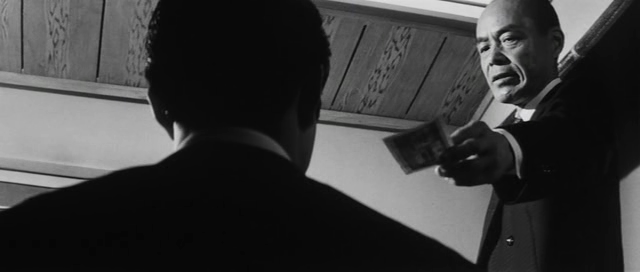
In terms of genre styling, industrial spies are basically the same as gangsters, terrorizing, threatening, bribing, and blackmailing others with the same sort of brutality. This point is even spelled out in the dialogue. Of course the practice of treating capitalism as a form of crime is an implicit feature of many crime pictures, no matter where they come from, but seeing this spelled out explicitly in a Japanese movie may make it easier for us to recognize than we would if it were an American or English crime story.
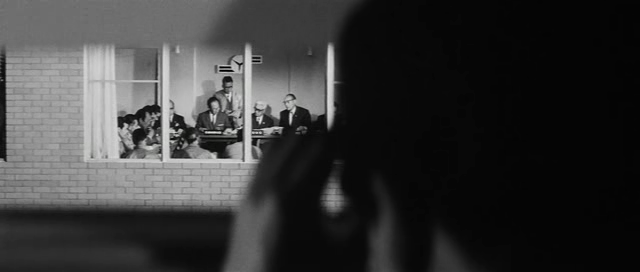
(Mawatari: “Reporters are like parasites. They print lies, then demand money to retract them.” “And men who hire parasites to write lies are even worse.” “Ah, that’s pretty harsh.”)
In the same scene, the hypocrisy of the bar hostess who claims to have contempt for Mawatari, then is shown cozying up to him, is underlined. The following scene shows another bar hostess, Masako, refusing a marriage proposal from her boyfriend because he makes their marriage contingent on her spying on Mawatari. This implies that female characters in Masumura films tend to have more moral scruples than male characters. Yet soon afterwards, we see Masako cozying up to Mawatari after all, even though we subsequently learn that she hates what she’s doing.)
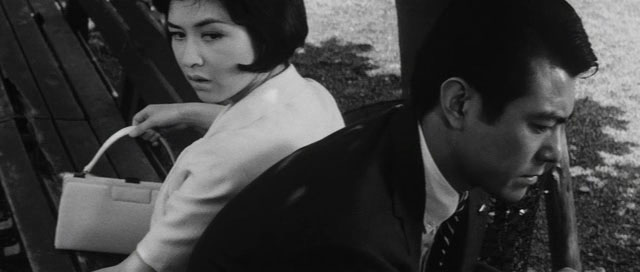
***
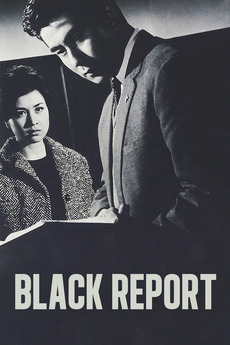
In The Black Report, one of his many spin-offs to Black Test Car, Yasuzo Masumura based his story on Edogawa Ranpo’s prize-winning novel Hanayaka na shitai, a thriller about a food company’s boss being killed and the search for his murderer. The ruthlessness that we find in Black Test Car — which at times suggests a kind of black comedy without laughs, or a bitter satire like Giants and Toys—isn’t really present here, so one might say that this is a spinoff of Black Test Car mainly in the sense of packaging and advertising, using “black” in the title in much the same way that Cornell Woolrich did after the success of his 1940 novel The Bride Wore Black, when he called subsequent novels The Black Curtain, Black Alibi, and The Black Angel. So this is more of a genre exercise than a polemic like its predecessor. Much of the action is centered around a trial, which is also the basis of the 1961 Masumura feature A Wife Confesses, which I and many Japanese viewers regard as his masterpiece. (It’s another thriller filmed in black and white ‘Scope. I should add that many of my favorite Masumura films — including Red Angel and False Student — are in that format and star the remarkable actress Ayako Wakao.) Japanese culture is notable for its economy of space when it comes to architecture, but the economy of plot exposition that we get during the first five minutes of The Black Report is rather astonishing, and it follows the same principle of packing a great deal very tidily into a confined space. It begins with the details of the police investigation of a murder, which we see during the opening credits, and after that, over the next few minutes, we learn almost as much about the major characters as we might learn from a Lew Archer mystery by Ross Macdonald.
